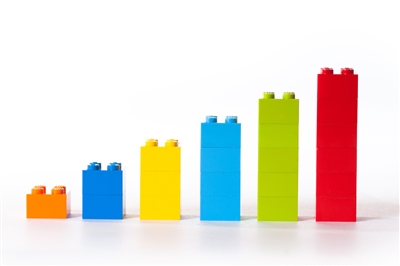What are the top five education resources of the last 40 years?

Everyone knows that the printing press is the most important invention - it has almost become pass to point out how it facilitated the dissemination of knowledge, incentivised literacy, and even helped spread democracy, as politicians could appeal to the public through printed pamphlets. The field of education may have benefited the most from the invention, as schoolchildren soon had access to printed sheets and textbooks to help them learn. There have of course been many inventions that had aided learning since the invention of the printing press in the fifteenth century - but what are the top five educational devices, or learning resources that have become widespread in the last 40 years.
1. The internet.
There`s really no way the internet couldn`t be included here, and though this list isn`t necessarily in any particular order, it should perhaps be taken for granted that the internet is the number one learning resource for every adult in any developed country. For many the internet is primarily used for entertainment - with Youtube, Spotify, and all the other streaming services, you can pretty much watch or listen to any piece of video or audio footage ever recorded. Youtube is also a great learning resource though, many universities upload their lectures to the site, and you can find a myriad of people who have created multi-part learning programmes, teaching anything from the didgeridoo to calculus. With just a phone, and a good signal, you can have access to more information than all the libraries of the world combined.
2. Word processors.
I admit this may be a more contentious choice, but I honestly don`t know how students composed large writing projects before word processors were available. When I was writing my 13,000 word dissertation at university, I was completely reliant on my word processor. I don`t mean just in the trivial sense that I used a computer and a writing programme to create it - rather that I needed to be able to cut and edit large sections, and past in words and paragraphs. To have done all this just using pen and ink would have been beyond me, short of using scissors and glue, and literally cutting and pasting pieces of paper into my dissertation, then rewriting the whole lot at the end.
3. E books.
I`ve never been able to assimilate long swathes of text on a computer monitor. After more than 20 minutes of focused reading, my eyes become unfocused. Easily irritated at the best of times (hay-fever season is a nightmare for me) my eyes just become sore after too much screen time. I`ve tried everything from increasing the font size, to attaching different filters to the monitor. It was while studying for my a-levels that I discovered E books. The screens operate completely differently to electric monitors: rather than using liquid crystals to display the text or graphics, they use something called electronic ink. The main benefit of this is that the screens are a lot easier on the eye, while also using just a fraction of the power that a conventional monitor uses.
4. Electronic educational devices.
As I child I was fortunate enough to posses a pair of highly educational devices. One of these devices was called `speak and spell` while the other was called `speak and math.` Though extremely basic and rudimentary by today`s standards, these `toys` would pose spelling and maths questions in a tinny, electronic voice. A correct answer would be greeted by sounds of congratulations (clapping and whistling I seem to remember), while wrong answers would be met with sounds of disapproval. Of course there are apps on any smartphone, or even educational websites, that are far more sophisticated than the archaic toys I once owned, but at the time they were a wonderful learning resource.
5. Lego.
Ok I know lego was invented more than 40 years ago (way back in 1932, to be precise) but I feel like I just can`t leave it off this list. Lego has been such a great learning tool for me, and when I see my children playing with it now, I appreciate all the more what a fabulous inventions it is. Lego allows children to let their imagination come to life. How very cliche that sounds, but it really does permit a child to construct an object from their own imagination. Along facilitating three dimensional spatial thought, and even teaching them a good deal about structural dynamics. Two of my good friends are architects and mechanical engineers, and they claim that it was playing with lego as children, and adolescents, that led them towards their dream professions.

 Add a Comment
Add a Comment